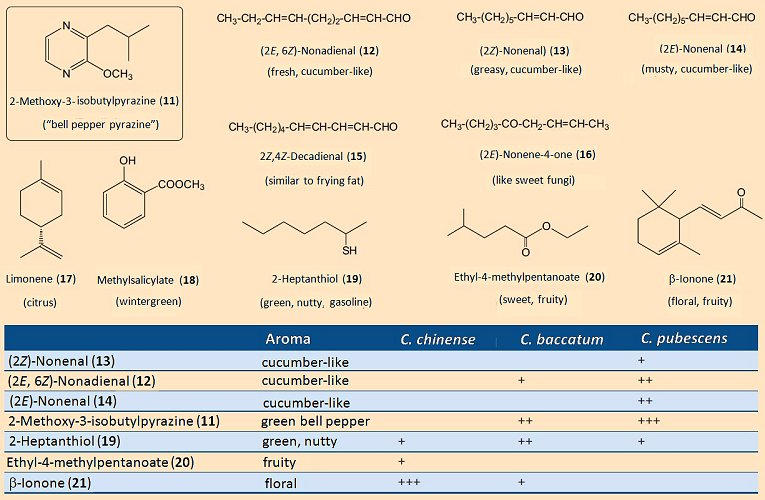Stumbled upon this while trying to research capsicum terpenes. Thought I'd share it here

From: www.chemistryviews.org
With respect to culinary pleasure, only rarely is a rigorous distinction made between taste and smell, as awareness of both derives from the nose/mouth realm, and both contribute to the overall sensation we describe as “flavor” or “taste”. Eating with a congested nose, or with the nose pinched shut, provides convincing proof that the “taste” of a particular food is perceived, to a great extent, by the nose in the form of an aroma, and rather less as a flavor, detected with the tongue.
For most of the (red) pepper grown throughout the world it is actually an appealing aroma that matters most, not how “hot” the product is. For this reason, a great many studies have been conducted of the various characteristic scents. Surprisingly, the aroma so familiar and typical for a green bell pepper is due almost entirely to a single substance: 2-methoxy-3-isobutylpyrazine (
11); (Fig. 8). The human nose is able to detect this “pepper-scented” compound at the almost unbelievably dilute aqueous concentration of 0.002 parts-per-trillion (i.e., 2:1,000,000,000,000). This means that the so-called bell pepper pyrazine is, for [SIZE=1.2em]humans, among the very most odor-intense substances known[/SIZE]
Aromatic (fragrant) components in peppers.
Apart from this pyrazine, there are a few other compounds that contribute to the overall characteristic aroma of a pepper (Fig. 8). It is of culinary importance, too, that the various pepper species exhibit significant differences in their aroma profiles. For example, among the volatile components of
C. chinense there is no bell pepper pyrazine (
11) whatsoever, so that here the typical aroma of green pepper is completely absent. In its place is β-ionone (
21), as well as various esters, all of which lead to a corresponding fruity/floral bouquet.
C. pubescens presents a supplementary light, nutty scent, resulting from 2-heptanthiol (
19). A mixture of short-chain esters, e.g., (
20), is what gives the Tabasco variety of
C. frutescens its powerful and characteristic fruity aroma [16].
As a result of the wide range of varieties, as well as the diverse growing conditions represented by the many cultivation regions around the world, the information about the aroma given above only provides a guide. Indeed, one of the charms of the pepper family is the fact that the culinary pleasure to be derived is ascertainable neither from size, nor color, nor place of origin. In other words, more than ample room is available for surprise.


